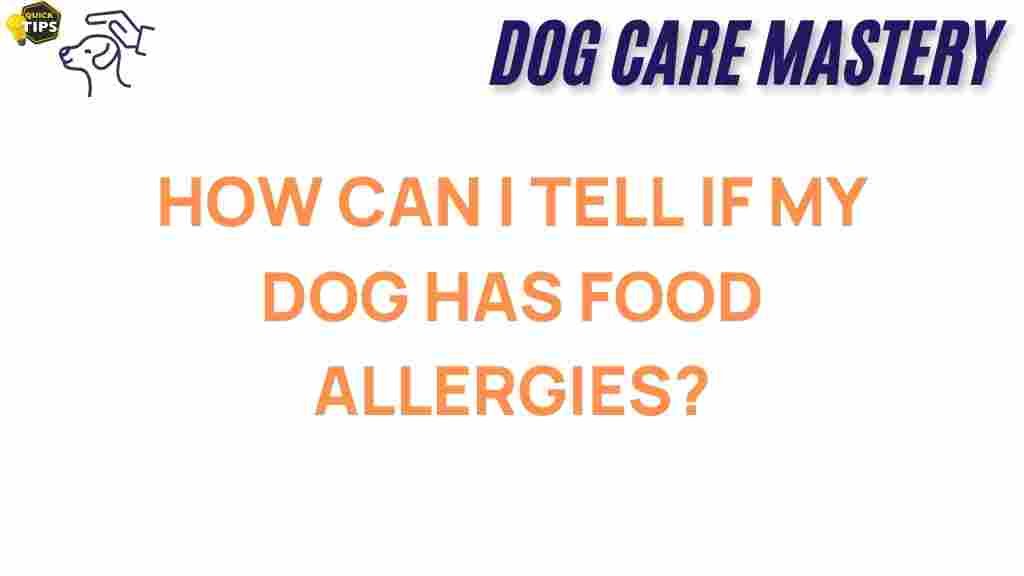Unraveling the Mystery: Does Your Dog Suffer from Dog Food Allergies?
If you are a dog owner, you may have noticed your furry friend scratching more than usual, experiencing digestive issues, or showing signs of distress after eating certain foods. While these symptoms can be caused by various factors, one of the leading culprits is dog food allergies. Understanding whether your dog suffers from food allergies is crucial for their health and well-being. In this article, we will explore the causes, symptoms, diagnosis, and treatment options for dog food allergies, helping you to identify and manage this condition effectively.
Understanding Dog Food Allergies
Dog food allergies occur when a dog’s immune system mistakenly identifies a component of their food as harmful. This can lead to a range of allergic reactions, affecting the skin, gastrointestinal tract, and even respiratory system. Unlike food intolerances, which are often less severe and may involve digestive upset, food allergies can lead to serious health issues if not addressed.
Common Causes of Dog Food Allergies
Several ingredients in dog food can potentially trigger allergies. The most common allergens include:
- Beef
- Dairy products
- Wheat
- Chicken
- Eggs
- Fish
- Soy
- Lamb
- Potatoes
It’s important to note that food allergies can develop at any age, even if your dog has been eating the same food for years without any issues.
Identifying Symptoms of Dog Food Allergies
Recognizing the symptoms of dog food allergies is a critical first step in determining whether your pet is affected. Symptoms can vary from mild to severe, and they may include:
- Itchy skin or ears
- Red, inflamed skin
- Chronic ear infections
- Digestive problems such as diarrhea or vomiting
- Excessive licking or chewing at paws
- Swelling or hives
If you observe any of these symptoms, it’s essential to consult with your veterinarian for a proper diagnosis.
Diagnosis of Dog Food Allergies
Diagnosing dog food allergies can be challenging due to the overlap of symptoms with other conditions. Your veterinarian may follow several steps to identify the issue:
1. **Medical History**: Discuss your dog’s diet, any recent changes, and the onset of symptoms. 2. **Physical Examination**: Your vet will conduct a thorough physical exam to assess your dog’s condition. 3. **Elimination Diet**: This is the most common method for diagnosing food allergies. You will be required to feed your dog a hypoallergenic diet that contains novel proteins and carbohydrates. This diet should be maintained for at least 8-12 weeks to observe any changes. 4. **Food Challenge**: If the elimination diet is successful, your vet may reintroduce specific ingredients one at a time to pinpoint the allergen.
Treatment Options for Dog Food Allergies
Once diagnosed, treatment for dog food allergies primarily involves dietary management:
1. Switching to a Hypoallergenic Diet
Feeding your dog a hypoallergenic diet is often the most effective way to manage food allergies. These diets typically contain:
- Novel Proteins: Such as duck, venison, or rabbit.
- Limited Ingredients: These diets have fewer components, making it easier to identify allergens.
- Hydrolyzed Proteins: These proteins are broken down into smaller components that are less likely to trigger an allergic response.
2. Avoiding Known Allergens
Once you identify the specific allergens, it’s crucial to avoid them completely. Read labels carefully and choose foods that do not contain these ingredients.
3. Supplements and Medications
In some cases, your veterinarian may recommend supplements such as omega-3 fatty acids to help manage skin inflammation and improve overall skin health. Additionally, medications may be prescribed to alleviate symptoms, including:
- Antihistamines
- Corticosteroids
- Immunotherapy (in severe cases)
Step-by-Step Process to Managing Dog Food Allergies
Managing your dog’s food allergies can be a systematic process. Here’s a step-by-step guide:
Step 1: Observe and Record Symptoms
Keep a detailed diary of your dog’s symptoms, diet, and any changes in behavior. This information will be invaluable for your vet.
Step 2: Consult with Your Veterinarian
Schedule an appointment with your veterinarian to discuss your findings. Be prepared to share your observations and any dietary information.
Step 3: Conduct an Elimination Diet
As guided by your veterinarian, start the elimination diet and monitor your dog’s response. Make sure to avoid all other foods, treats, and snacks.
Step 4: Identify Allergens
After the elimination phase, gradually reintroduce ingredients one at a time. Watch for any recurrence of symptoms to pinpoint the allergens.
Step 5: Establish a Long-term Diet Plan
Once allergens are identified, work with your vet to establish a long-term diet plan that meets your dog’s nutritional needs while avoiding allergens.
Troubleshooting Tips for Dog Food Allergies
Even after identifying and managing your dog’s food allergies, you may encounter some challenges. Here are some troubleshooting tips:
- Read Labels Diligently: Ensure that all foods and treats are free from allergens. Ingredients can vary between brands.
- Monitor for Cross-Contamination: Be cautious of shared spaces and utensils that may introduce allergens.
- Consider Homemade Diets: In some cases, homemade diets can offer better control over ingredients. Consult your vet for recipes and nutritional balance.
- Regular Vet Check-ups: Schedule regular check-ups to monitor your dog’s health and adjust their diet as needed.
Conclusion
Understanding and managing dog food allergies is essential for ensuring your pet’s health and happiness. By recognizing the symptoms, working closely with your veterinarian, and following a structured approach to identify allergens, you can significantly improve your dog’s quality of life. Remember, while food allergies can be frustrating and challenging, with the right knowledge and resources, you can provide your dog with a safe and enjoyable diet. For more information, you can visit this helpful resource on dog health.
Taking proactive steps will not only alleviate your dog’s discomfort but also strengthen the bond you share with your beloved pet. Don’t hesitate to reach out for professional guidance—your dog deserves the best care possible!
This article is in the category Health and created by dogcaremastery Team
